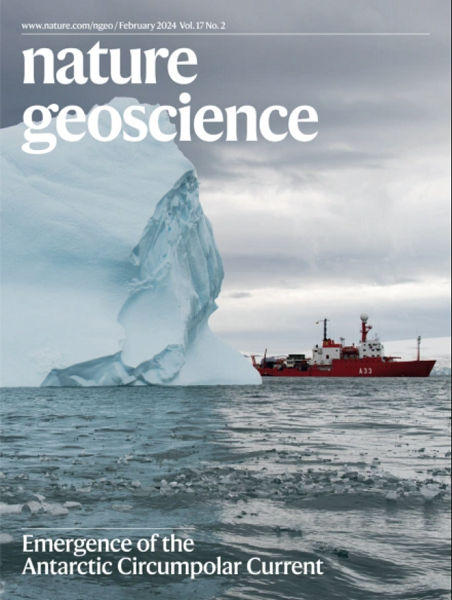硅质欠饱和和硅质过饱和岩浆之间的中地壳临界点
IF 16.1
1区 地球科学
Q1 GEOSCIENCES, MULTIDISCIPLINARY
引用次数: 0
摘要
碱硅酸盐火成岩杂岩包含多种岩石类型,从硅-欠饱和(长石-规范)到硅-过饱和(石英-规范)。目前,这种成分多样性形成的控制因素还没有得到很好的量化。在这里,我们应用热力学模型来研究这些控制,并以布拉奇福德湖火成岩杂岩(加拿大)为例进行了研究,该杂岩是世界范围内碱硅酸盐系统的组成代表。通过模拟原始基性熔体在地壳压力下的分异,我们确定了一个狭窄的(~0.5 kbar)“临界点”,在这个临界点上,残余熔体在较浅或较深时分别变得富含硅或富含碱。这个临界点一直存在于中地壳压力(3-5千巴;(10-15公里深),在这个范围内,对于含水更多和氧化程度更高的熔体,压力会更高。因此,在这些压力下的结晶(在复合体的气压估计范围内)可以产生并解释观察到的富碱和富硅成分的巨大多样性。类似的临界点也存在于其他模拟的中地壳条件下的基性火成岩系统中,表明这是一个广泛存在的现象。这一结果表明,中地壳基性分型室在世界范围内碱-硅酸盐配合物组成多样性的形成中起着关键作用。本文章由计算机程序翻译,如有差异,请以英文原文为准。


A mid-crustal tipping point between silica-undersaturated and silica-oversaturated magmas
Alkaline–silicate igneous complexes contain a huge diversity of rock types, ranging from silica-undersaturated (feldspathoid-normative) to silica-oversaturated (quartz-normative) compositions. At present, the controls on the formation of such compositional diversity are poorly quantified. Here we apply thermodynamic models to investigate these controls using a case study of the Blatchford Lake Igneous Complex (Canada), which is compositionally representative of worldwide alkaline–silicate systems. By modelling fractionation of a primitive mafic melt across crustal pressures, we identify a narrow (~0.5 kbar) ‘tipping point’ across which residual melts become silica-rich or alkali-rich when shallower or deeper, respectively. This tipping point is consistently present at mid-crustal pressures (3–5 kbar; ~10–15 km depth) for a range of viable primitive melts, moving to higher pressures within this range for more hydrous and more oxidized melts. Crystallization at these pressures (within barometric estimates for the complex) can therefore generate and explain the vast diversity of observed alkali-rich and silica-rich compositions. A similar tipping point is also present in other modelled mafic igneous systems at mid-crustal conditions, indicating it is a widespread phenomenon. This result implies a key role for mid-crustal mafic staging chambers in generating compositional diversity in alkaline–silicate complexes worldwide. A narrow range of pressures at mid-crustal depth represents a tipping point between silica-undersaturated and silica-oversaturated compositions crystallizing from mafic melts in alkaline–silicate igneous systems, according to a thermodynamic modelling study.
求助全文
通过发布文献求助,成功后即可免费获取论文全文。
去求助
来源期刊

Nature Geoscience
地学-地球科学综合
CiteScore
26.70
自引率
1.60%
发文量
187
审稿时长
3.3 months
期刊介绍:
Nature Geoscience is a monthly interdisciplinary journal that gathers top-tier research spanning Earth Sciences and related fields.
The journal covers all geoscience disciplines, including fieldwork, modeling, and theoretical studies.
Topics include atmospheric science, biogeochemistry, climate science, geobiology, geochemistry, geoinformatics, remote sensing, geology, geomagnetism, paleomagnetism, geomorphology, geophysics, glaciology, hydrology, limnology, mineralogy, oceanography, paleontology, paleoclimatology, paleoceanography, petrology, planetary science, seismology, space physics, tectonics, and volcanology.
Nature Geoscience upholds its commitment to publishing significant, high-quality Earth Sciences research through fair, rapid, and rigorous peer review, overseen by a team of full-time professional editors.
 求助内容:
求助内容: 应助结果提醒方式:
应助结果提醒方式:


